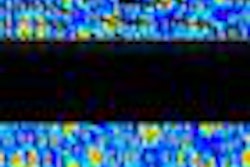CHICAGO - In a series of presentations at the RSNA 2012 annual meeting, researchers from Korea, Italy, and the U.S. described advances in detecting and diagnosing cancer through the use of virtual colonoscopy, also known as CT colonography or CTC.
Limited prep
In one study, a group from Italy detailed preliminary findings that suggest individuals with an average risk of colon cancer can successfully undergo CTC with a limited bowel preparation. The prep consisted mainly of a low-fiber diet and use of Movicol sachets three times a day, two days before the test.
Of the 1,019 subjects in the trial, 10.1% were found to have colon polyps at least 6 mm in size, said Dr. Gabriella Iussich, research assistant in radiology at the Istituto per la Ricerca e la Cura del Cancro in Turin. She said 39 of the polyps were at least 10 mm.
"As a primary colorectal cancer screening tool, CT colonography with limited bowel preparation has an acceptable low endoscopic referral rate and a low number of inadequate examinations -- about 2.9%," Iussich said.
The trial will compare the findings with flexible sigmoidoscopy, she said; those results are not yet available.
Occlusive cancer
In Korea, researchers found that CTC was capable of detecting synchronous tumors in the proximal colon among patients with occlusive colorectal cancers. Results were presented by Dr. Seong Ho Park, PhD, professor of radiology at Asan Medical Center in Seoul.
The retrospective study evaluated CTC exams of 427 patients who had a failed colonoscopy due to an occlusive lesion. The goal was to see if the imaging could determine whether there were other cancers in the area that would require extensive surgery or if the blockage was the only lesion, Park said. He suggested that CTC might prevent unnecessary or repeat surgery, or a missed opportunity for curative treatment.
Among the 284 evaluable patients, there were 165 men and 119 women; their average age was approximately 59 years. Imaging allowed doctors to visualize 39 of 44 advanced neoplasias and all six adenocarcinomas beyond the obstructing cancer -- an 88.6% sensitivity for advanced neoplasias and 100% sensitivity for cancer, Park reported in his presentation.
Successful CADx
Finally, Kenji Suzuki, PhD, assistant professor of radiology and medical physics at the University of Chicago, described how using computer-aided diagnosis (CADx) with CTC could help radiologists distinguish between neoplastic and nonneoplastic lesions.
In the study, readers were asked to evaluate the lesions based on CTC alone, and then to use the CADx system to further aid diagnosis.
With the use of CADx, area under the receiver operator characteristics (ROC) curve increased from 0.79 to 0.88 (p = 0.01). Positive predictive value rose from 93% to 96% (p = 0.26), and negative predictive value rose from 41% to 48% (p = 0.04), Suzuki said in his presentation.
"Our observer performance study demonstrated the potential of the use of CTC as a diagnostic tool beyond detection," he said. "Thus, [CADx CTC] would potentially reduce 'unnecessary' polypectomy/colonoscopy."
"These studies show us ... the ability to use CT colonoscopy for screening as well as for situations in specific clinical scenarios which can aid clinicians in the care of their patients," said Dr. Michael Zalis, associate professor of medicine at Harvard Medical School and director of CTC at Massachusetts General Hospital, who moderated the session.
In the session's keynote address, Dr. Judy Yee, professor and vice chair of radiology and biomedical imaging at the University of California, San Francisco, said that continued research into the practical uses of CTC is pushing government agencies to reconsider whether virtual colonoscopy can be reimbursed by the healthcare system.
The largest of the healthcare insurers are already reimbursing for the procedure in many cases, Yee noted.
"CT colonography is globally validated as an effective test," she said. She noted the promising development of nonlaxative imaging studies, strategies for computer-aided diagnostic use, attempts to reduce radiation exposure, and innovative displays that make diagnosis easier.
"We also know that the benefits from CT colonography screening outweigh the potential for any radiation risks," Yee said.




















